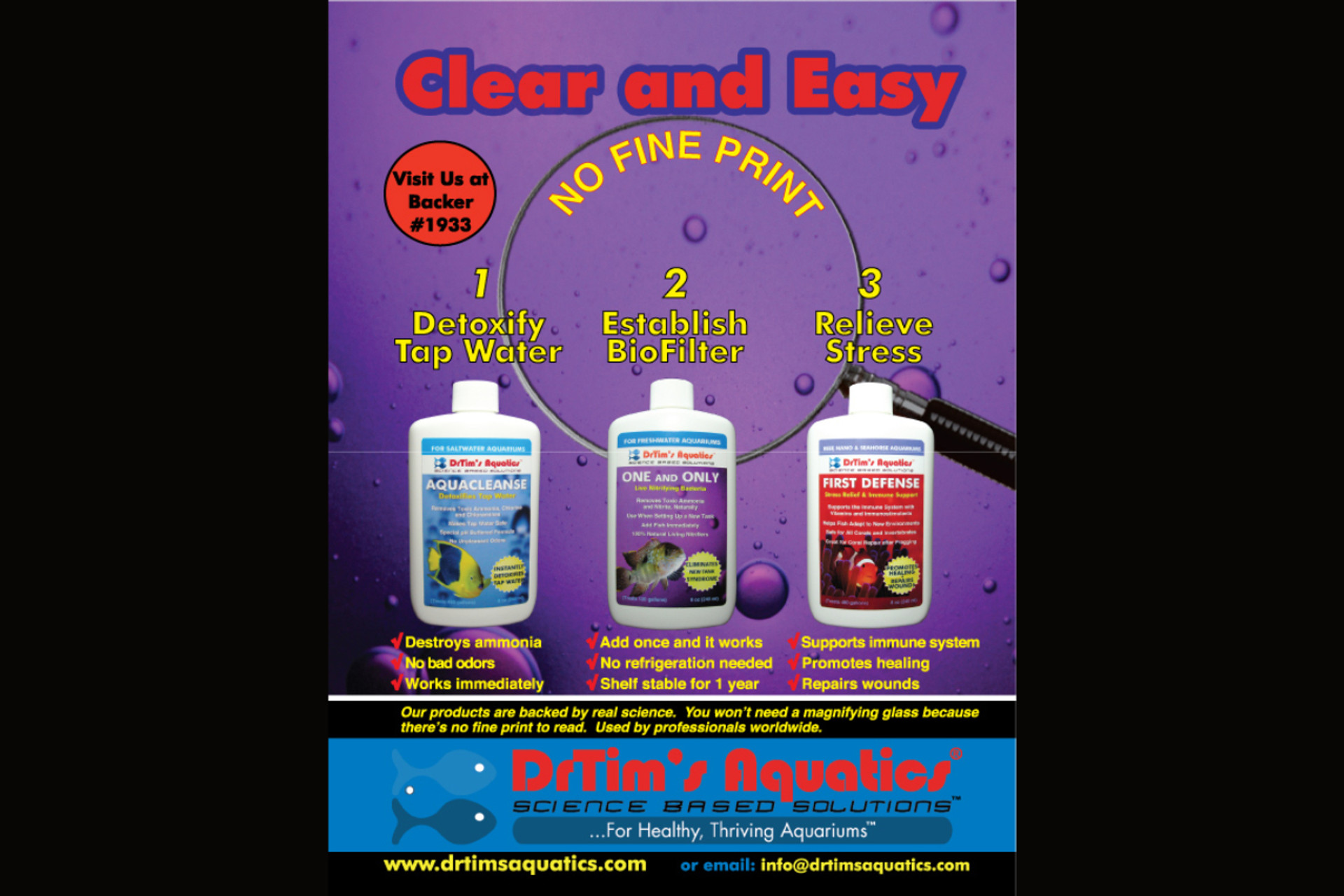Those New Tank Clouds

Today on Ugly Busters, we're here to talk about Cloudy Tank. This is almost always a new tank issue, and if you have this, one thing is obvious: You did not read our setting up tanks for beginner's article! Luckily for you, this is probably the easiest problem you will ever have to solve as an aquarium aficionado. Cloudy Tank, or New Tank Clouds (NTC), is confounding for new aquarists, because they have put together a tank, filled it, started filters, and it was so clear it sparkled. A few days later they whole thing is hazy, and sad faces happened.
NTC is just a byproduct of an aquarium having no biological filter, and had you used some Dr. Tim's Freshwater One and Only, this likely could have been avoided. If you don't utilize a bacterial booster (like the Dr. Tim's), all aquariums will take a week or three to start to develop nitrifying bacteria of their own (see our article on the nitrogen cycle). Because your new tank doesn't have any bacteria in it utilize all the existing minerals and nutrients, a myriad of other free-floating little life forms (generally also bacterial in nature) starts to colonize the tank to start to take advantage of the situation. Since they have no competition, their populations explode, and you get a hazy tank.
The biggest upside to NTC is that the treatment for it is to either go ahead and use the One and Only, or to simply wait while your aquarium develops the bacteria it needs to compete with the micro-floaters making your life cloudy. If your aquarium already has fish in it, which it shouldn't if you didn't use the bio-booster, then you have to dose it. Your fish are producing more waste than the system can absorb, and you are likely going through an ammonia or nitrite spike, and these can both kill fish, so get yourself to your local fish store ASAP. If your aquarium doesn't have any fish yet, then you also have the option of going the wait-it-out route. Even if you dose at this point, the aquarium won't immediately drop clear, the free-floating bacteria will slowly die out as they get out-competed for nutrients and fall out of the water column, though it will be faster than waiting it out. Regardless, in a couple days, it will be shiny bright again.
Things you don't want to do include adding fish, feeding the tank and strangely, big water changes. The first two are obvious as they will add further stress to an already taxed aquarium, but a big water change fixes so much stuff, why not do it? It does seem counterproductive, and in the short term, it will work. The tank will be much clearer after a 50% water change. Tomorrow, you will have fed all the free-floating, free loaders a whole bunch of new nutrients and minerals and your nitrifying bacteria population still won't be up the task of competing with them. Usually this makes the cloudiness worse than ever. If you've already done the water change, and are now in full panic mode, don't be. Take a deep breath, keep calm and aquarium on. The same fixes will still work, and honestly, quite quickly.
Occasionally, aquariums will get the NTC even if they aren't brand new, and this is generally the result of one or two things. The first culprit is an overfeeding event; a food spillage, an abundantly generous sibling or roommate feeds your tank, or an auto feeder gone rogue can all overload your aquariums bacterial filter and cause your tank to haze up. The second culprit is adding too many fish at once, another great way to overload your bio-filter. The best way to deal with either of these scenarios this is to add One and Only, and then (and this is where it differs from new tanks) do a large water change the next day. If you are able to physically remove uneaten food from the aquarium, always take this step first, and you may save your fish and a headache for yourself.
Another treatment for NTC is adding plants. Plants will naturally utilize many of the minerals and nutrients that the free-loader-floaters are feasting on. They also offer surface area that can be colonized by the nitrifying bacteria that we do want, further reducing the nutrient and mineral load at the root of the cloudiness problem. When choosing plants for this, choose durable, low demand plants, and don't use a ton of them, or they will fail to thrive in an aquarium that wasn't set up for plants to start with. For those of you unfamiliar with planted aquariums, there is a lot more to it than putting plants into your tanks. You can read more on setting up planted tanks here https://www.qualitymarine.com/news/planted-tank-101/ and in addition, there is a good list of low demand plants for you to start thinking about in this article as well.
New Tank Clouds may test your patience, but as long as you don't already have fish, that's all it will do. Even if you do have fish already, just don't panic, take reasonable action and then wait. Like most aquarium challenges, a little bit of effort and a bit more patience will get you past the first level boss.